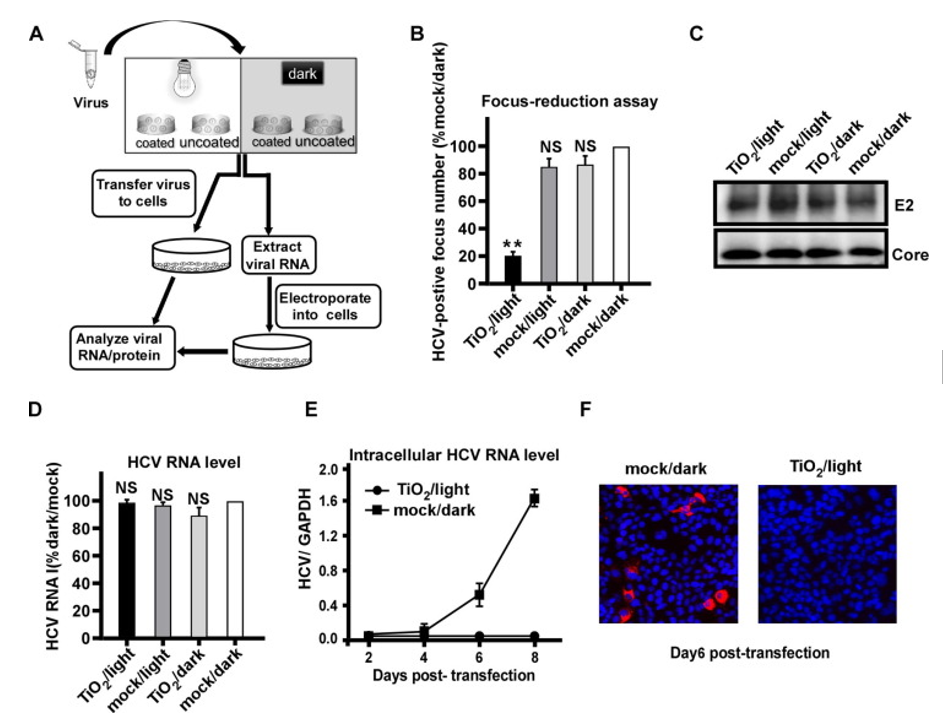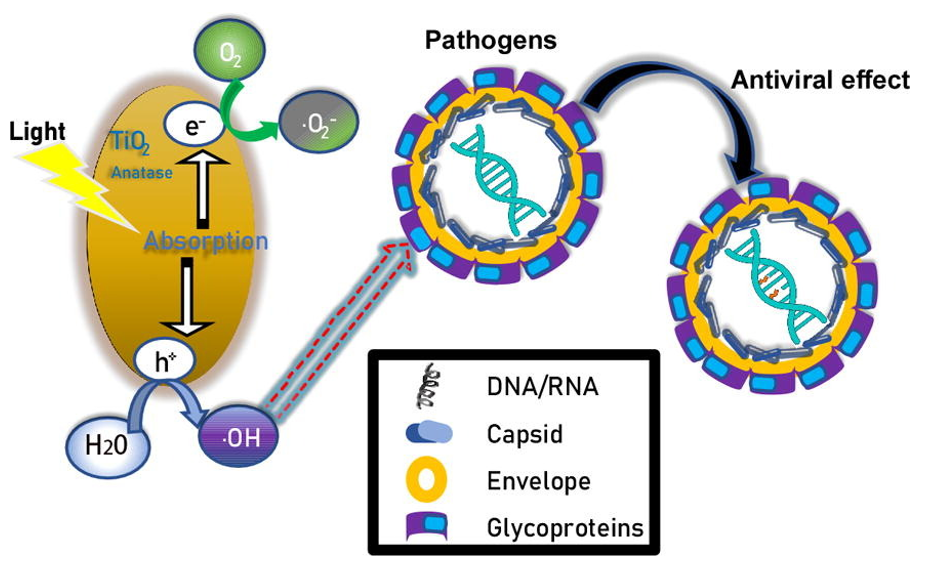Scientist Disclose the Antiviral Mechanism of Photocatalytic Materials
Highly pathogenic viruses such as new coronaviruses, influenza viruses, and enteroviruses challenge the urban public safety, especially in the situation of recent COVID-19 pandemics. A broad-spectrum antiviral technology is urgently needed. Compared to the mainstream antiviral methods, like disinfectant or ultraviolet light, photocatalytic disinfection shows an advantage of duration performance and non-toxicity, which make it as a potential antiviral technology. It is essential to make an in-depth research to study the mechanism of photocatalytic antiviral process and to develop the materials.
Recently, the research groups, led by Prof. SUN Jing at Shanghai Institute of Ceramics and Prof. ZHONG Jin at Institut Pasteur of Shanghai, made new progress in the study of photocatalytic antiviral mechanism. They developed a system to study the effects of nanosized TiO2 on pathogens under a low irradiation condition (0.4 mW/cm2 at wavelength of 375 nm), a condition that more resembles natural light source and has an advantage in the real-world field application. The result was published in Chemical Engineering Journal (Chem. Eng. J.414,128788(2021)). The first authors are SHI Gansheng assistant professor at Shanghai Institute of Ceramics, and TONG Yimin, associate professor at Institut Pasteur of Shanghai.
The results showed that photo-activated TiO2 efficiently inactivates a broad range of pathogens, including HCV, VSV, H1N1, HSV-1, ZIKA, SARS-CoV-2. Mechanistic studies demonstrated that photo-induced hydroxyl radicals rather than superoxide radicals play a major role in virus inactivation. Importantly, in contrast to the previous findings, photo-induced radicals did not destroy the virion global structure and contents, but attacked viral genome, leading to inactivation of the virus.
This study demonstrated that nanosized TiO2 is an effective and safe photocatalyst to disinfect pathogenic viruses. The results paved a way to the related application of this photocatalyst in control of viral infectious diseases.

(A) Experimental flowchart of antiviral photocatalytic mechanism,(B) Evaluation of the antiviral efficiency of photocatalysis in vitro under low light intensity,(C-D) The effect of photocatalytic process on viral E2 protein and core protein,(E) The effect of photocatalytic process on viral RNA replication,(F) Immunofluorescence of NS3 protein after photocatalytic treated virus RNA transfected into Huh7.5.1 cells compared with control group.

Schematic illustration of antiviral photocatalytic mechanism
Reference:
https://doi.org/10.1016/j.cej.2021.128788
Contact:
Prof. SUN Jing
Shanghai Institute of Ceramics
jingsun@mail.sic.ac.cn



